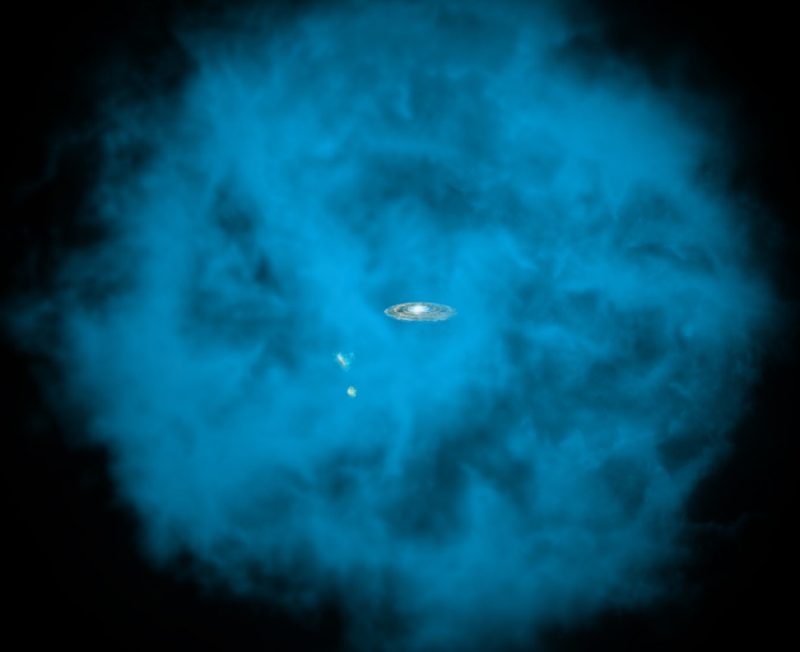
Our Milky Way galaxy and its small companion galaxies are surrounded by a giant halo of million-degree gas (seen in blue in this artist’s rendition) that is only visible to X-ray telescopes in space. U-M astronomers discovered that this massive hot halo spins in the same direction as the Milky Way disk and at a comparable speed. (Credit: NASA/CXC/M. Weiss/Ohio State/A. Gupta et al.)
A team of astronomers led by researchers at the University of Michigan have uncovered a new feature about our galaxy.
The Milky Way galaxy is ensconced within “a halo of diffuse, star-forming material called plasma” that reaches temperatures of a million degrees, reported Gizmodo.
Previous research indicated that this plasma remained stationary, but this new study indicates the halo is spinning around the Milky Way at a staggering 400,000 miles per hour.
This research project, funded by NASA, examined archival data obtained by the European Space Agency’s XMM-Newton Telescope. The idea was to understand how light from the halo becomes bent and distorted after traveling millions of light years to reach our eyes, according to Gizmodo.
Changes in hot oxygen atoms were used to measure this light distortion where results revealed the halo was spinning at a tremendous velocity.
Understanding the direction and speed of the spinning halo could help astronomers learn how different forms of matter arrived and transformed into stars, planets, and other celestial bodies along with analyzing how our galaxy could evolve.
This study is published in the journal Astrophysics Journal.




